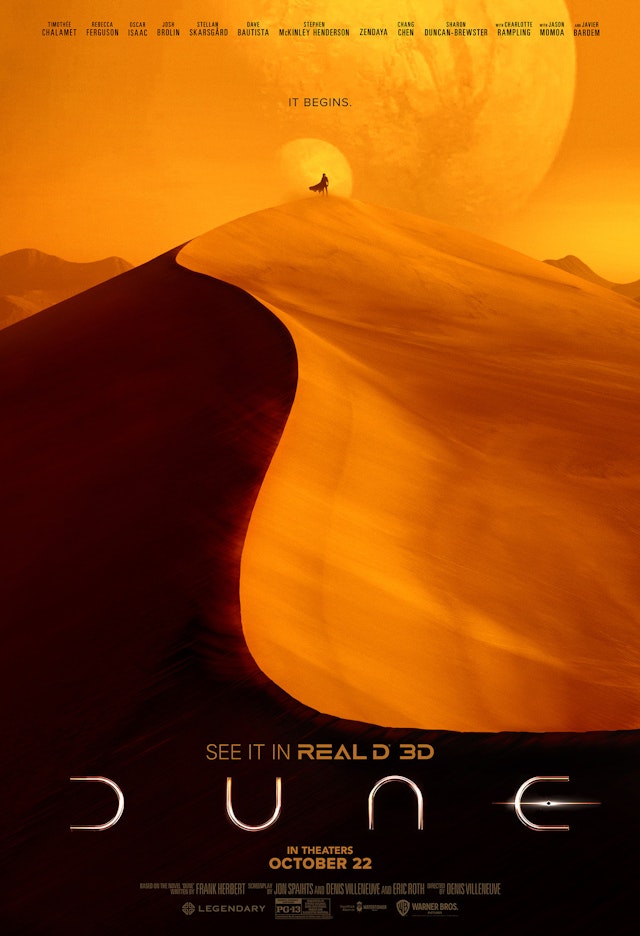What can marketers learn from movie posters?
Movie posters are one of the great art forms. Their job is to sell thousands of hours of work from a huge variety of artists and industry professionals, and tell a story without giving too much away – all this, but with only one image (and possibly a tagline). Vertical Leap’s head of creative Kirsty McLean considers the skill in condensing a feature into a singular shot, and what can be gained from this simplifying process.

Vertical Leap on the effectiveness and emotive appeal of movie posters and how their tricks can be embedded in advertising
It sounds almost impossible, but the designers who create movie posters are talented enough to distill down the essence of a movie into one clear idea that is able to act as a proxy for the production as a whole. Motifs, themes or images from the plot can be combined together to ‘show not tell’ – one of the most important storytelling devices.
A really successful recent example of this is for Spencer (Kristen Stewart sobbing, back to the camera and being engulfed by a gown while darkness creeps in around her). This poster is able to draw the audience in, tell them just enough to get them interested in the movie’s major themes, but leave them still wanting more so that they’ll go and buy a ticket.
Another great example is this poster for Dune (2021) – for such an epic and well-known story, it must have been incredibly difficult to hone in on one motif for the poster. Here, the designers have chosen to depict the vastness of the desert world of Arrakis in the foreground, with Timothée Chalamet’s character distant but elevated to show his importance to the future narrative. The warmth of the colors echoes the heat of the landscape, but also the danger on the horizon, and the clever use of light and shadow plays into the idea of darkness encroaching on the protagonist.

The tagline for this poster is also of note. “It begins” is disarmingly simple, but invites the audience to speculate – “What begins?” – or nods to book readers who understand that this is potentially the first of many movies set in this world. It amplifies the hype around the film release, and builds on the dramatic tension before audiences are even able to book tickets.
Marketers from any industry can learn some important lessons from movie posters – namely that our audiences have short attention spans, so if we don’t reel them in at first glance, we’ve likely lost them. Any kind of confusing, cluttered or mixed messaging will be an immediate turn-off for your customers, who want to feel like they’re interacting with a business that truly knows and understands its own products or services.
Some advice I often find myself giving to customers who come to us for a new website is that you need to spend time distilling down your USPs and the essence of your offering, and ensure that it’s then clearly communicated in the hero section of your homepage – but this can be more broadly applied to all areas of marketing.
It is vital to find your niche and have the confidence to give your core messaging the space it needs to cut through, rather than surrounding it with loads of supplementary information about who you are and what you do – which, instead of inspiring confidence, will dilute your intention and not leave your audience wanting more.
You also have to know your own story before you’re able to communicate it to others, so always put the work in to fully understand your brand and offering to ensure your messaging tells your story effectively and with maximum possible impact. This work might involve user research, creating personas, empathy mapping or user journey workshops, interpreting your Google Analytics data – anything that helps you to get into the heads of your users, and gain a complete understanding of why your business or product will appeal to them.
You can then use this data to inform a marketing strategy that hones in on your USP, which will ensure that this overarching vision is at the core of all of your ongoing marketing activity. Your potential customers will then feel confident in your clear vision, and will in all likelihood want to engage further with your business.
If you need help creating a website as slick and effective as a movie poster, find out more about our website design and build services.
Content by The Drum Network member:

Vertical Leap
We are an evidence-led search marketing agency that helps brands get found online, drive qualified traffic to their websites and increase conversions/sales.
To...

